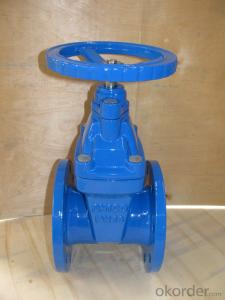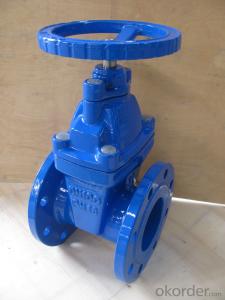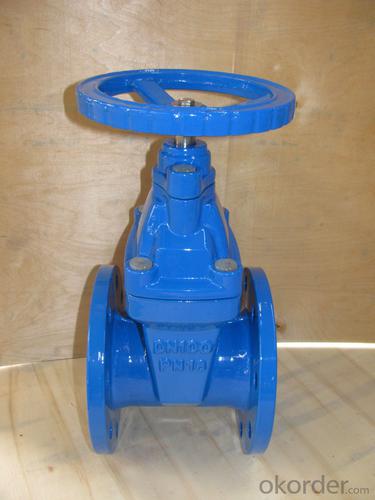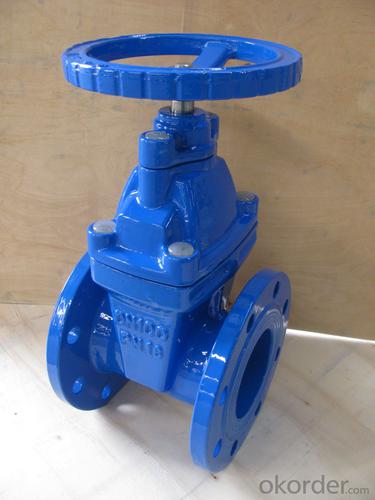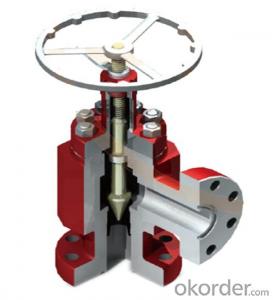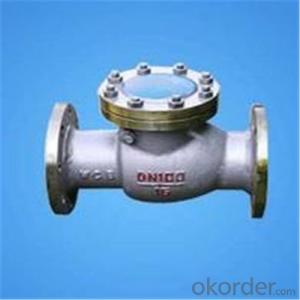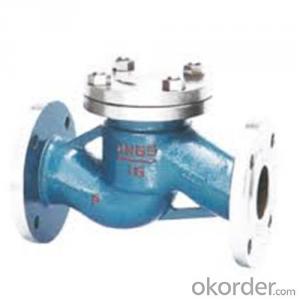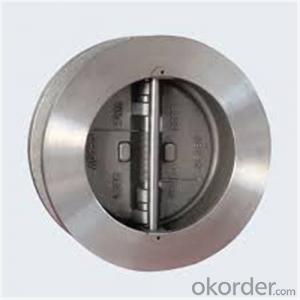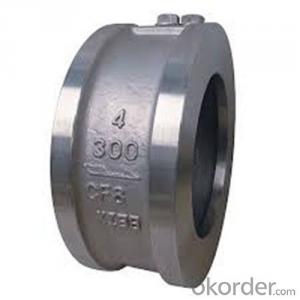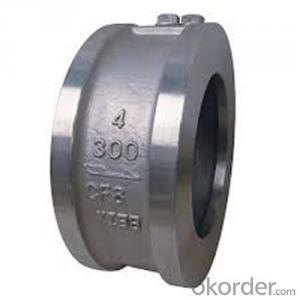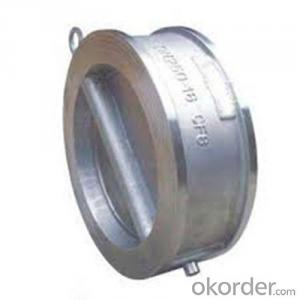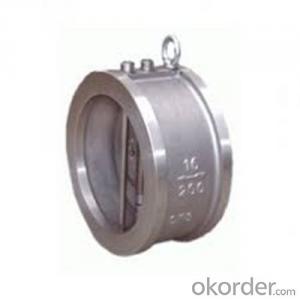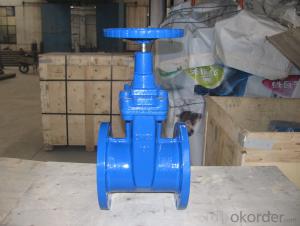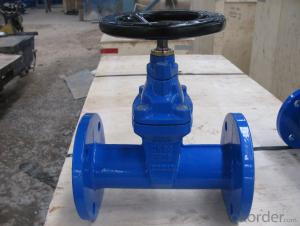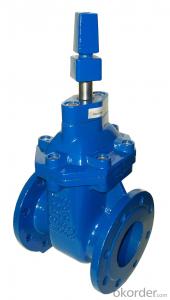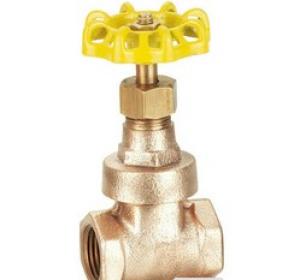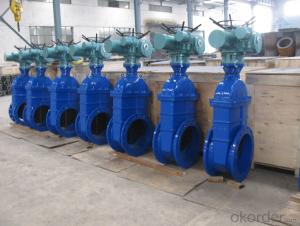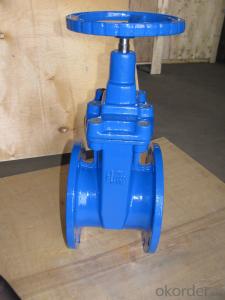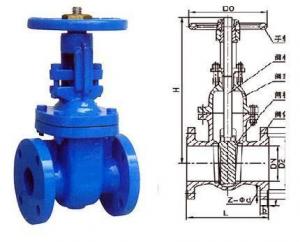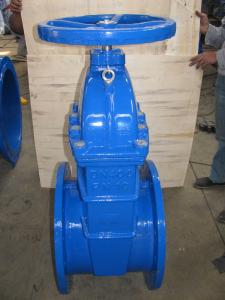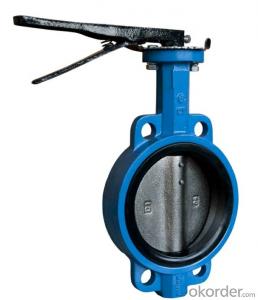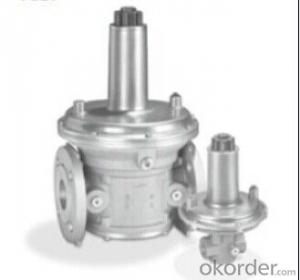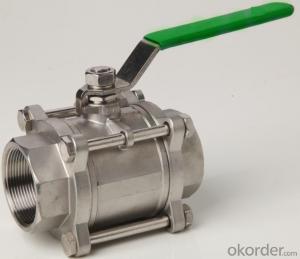Non-rising Stem Metal Seated Gate Valve DIN3352
- Loading Port:
- China Main Port
- Payment Terms:
- TT OR LC
- Min Order Qty:
- -
- Supply Capability:
- -
OKorder Service Pledge
OKorder Financial Service
You Might Also Like
Type: | Non-Rising Stem |
Material: | Body: Cast Iron / Ductile Iron Wedge: Cast Iron / Ductile Iron Encapsulated with EPDM Seat: EPDM / NBR Shaft: SS410 Stem Nut: Brass O-ring: EPDM, NBR Wedge Nut: Brass / Bronze Hand Wheel: Ductile Iron
|
Operator: | Hand Wheel / Bevel Gearing / Square head / Electric actuator |
Face to Face: |
BS5163: 1986, DIN 3202 F4-F5, JIS B2002, ANSI B16.10
|
Flange: | BS4504, DIN 2532, JIS B2212, ANSI B16.10/ANSI B16.50
|
Working Pressure: | 16 Bar(200 PSI) |
Design and Manufacturer Standard : | BS5163, DIN 3352, JIS B2043 |
Test Standard: | API 598 BS6755 DIN 3230 JIS B2003 |
Application: | Water works, Sewage, Public facilties, Building industry, Petroleum, Chemical, Steel, Metallurgy, Paper Making Industry, Foods, Beverage, HVAC |
| | | | ||||||||
| | | | ||||||||
| | | | ||||||||
| | | | ||||||||
| | | | ||||||||
| | | | ||||||||
| | | | ||||||||
| | | | ||||||||
- Q: I have a 1997 Toyota Corolla. My check engine light has been on. I tried to get my car smogged and it failed. I then got an oil/air filter change and just yesterday I replaced the EGR valve which was the result given after 2 diagnostic tests. The mechanic gave me my car and the check engine light was off, I've only driven about 5miles and the light is back on. I have to pass smog asap to register my vehicle. I plan on calling the mechanic back and telling him the light is on, but could it just be a sensor?
- All synthetic oil wont burn. But if the piston rings are shot and you'r failing on hydrocarbons, that's an expensive fix. Some states have an emissions waiver, maybe limited to older vehicles like yours, where if you show DMV you'v met their waiver threshold of spending on fixing the specific emissions prob that caused the failure and it still fails, they'l give you a pass till next inspection, or maybe only 1 yr. In some states it's not transferable when you sell and can only be used once per vehicle.
- Q: So I was diagnosed with a bicuspid aortic valve a couple months ago, I am 20 now and I was told that the defect normal dosent cause problems untill late 30's-40's. I have been having chest pains and at times sever palpitations. Has anyone eles gone through this? Anyone older that has experience with this problem?
- I have a bicuspid aortic valve, it was discovered when I was a few days old. I'm 22 now. If you are having chest pains and palpitations you really need to get in and see a cardiologist. They'll probably give you a heart monitor which is a 24 hour thing that you wear. If you don't catch anything try asking for an even monitor, one that you wear for a month. You really do need to go see someone though. If you want to talk further about it, because I know how scary something like that can be, we can chat further on yahoo or e-mail.
- Q: Serious answers only please. I have a 1995 Ford F-250 XL 5.8L 351 c.i. engine. My check engine light comes on periodically when I drive. When I bought the truck a year ago the gas mileage wasn't too bad, about 9-10 mpg. I've only put about 3,000 miles on it this past year, and now the needle drops just driving it across town. I work at a Chevy dealership, and I've worked at another Chevy dealer as well as a Ford. I've always done my own work on my cars and am currently restoring a 1967 Mustang, so I have decent knowledge under the hood. I scanned the truck and it has a stored code for EGR valve voltage too high (stuck open). How bad could this be hurting my gas mileage? It's $160 for the valve and sensor even after my discount, and being a college student that's a lotta $ to pay. I'm selling the truck and need it running perfect when I do. Please, serious answers only, and help is greatly appreciated!
- Open the hood, find the valve and check its operation. With the engine running, watch the diaphragm and then operate the throttle. When you gun the engine, you should see the diaphragm move. If it doesn't, there may be a dried-out and damaged rubber vacuum hose (quite likely) or else the valve is clogged up with carbon. Pull the valve out and shoot it full of carburetor cleaner to dissolve out the carbon. You should be able to move the operating diaphragm by sucking on the vacuum tube. While you're in there, start the engine without the EGR valve in place and shoot carburetor cleaner into the holes that lead into the intake manifold: one should have vacuum, and the other should have exhaust pressure.
- Q: If my understanding is correct, in a standard combustion engine as you press the gas pedal the speed of everything increases: the cam shafts spin faster (and thus the valves move faster), the pistons move faster...EVERYTHING goes faster. That sounds like an optimal system in theory, so what is the benefit of having the valves be able to be intelligently out of phase (for lack of a better phrase) with the rest of the system?
- Gee, okorder /
- Q: okay, where the dome is on the head (where the flat part of the valves sit) the intake is uneven and the air+gas mixture escapes threw the open space when the piston goes up into the compression stage, and ignites shooting flames out of my exhaust port. the space is small but u can see light threw it when the valve sits there. Would some kind of Liquid metal work? or gas+heat resistant epoxy work to take the place of the missing space? I would file it but that would not be precise and time consuming, and i would buy a new head for $150, but the dealer doubles that price! and no way am i paying $300 for a new head. any comments would be well appreciated!
- take bike to dealer and get it fixed right.
- Q: okay, so i have a 2003 cr125 that i wanted to trade for a 4 stroke bike, and i found someone with a 2006 kx250f that wants to trade. He said all the bike needs to be running are 4 valves. The bike is in very good condition from the pictures i saw. How much are the 4 valves going to cost if i bring it to a mechanic shop? is the trade worth it? or should i just keep looking? thanks!p.s.- my cr is in absolute mint condition, and i never even rode it because it is just to much bike for me and i am not use to 2 strokes
- below $one hundred. I had mine adjusted final year at a broking and it value $seventy 5. yet ask them what they think of once you're taking the motorbike in so which you dont pay for some thing it dosnt prefer!
- Q: 12 valve
- Un plug the vacuum hose on top of the valve, loosen and remove the big tube nut on the bottom of the valve, I have found if you hit it sharply with a hammer 3 or 4 times before you try to loosen it won't break the valve off, once the tube nut is undone remove the 2 bolts holding the EGR valve to the intake manifold. Remove and discard the gasket and install the new valve in the reverse order. If the tube nut still won't come loose try heating it with a torch, if it's really rusted on you might have to replace the EGR tub along with the valve.
- Q: My car may have warped valves. What does this mean? Can it be fixed? If so about how much? And how does this happen in the first place? Anything helps! Thanks!
- You need a new mechanic. Valves don't warp. They bend from hitting something or burn but not warp................
- Q: Also please tell me why globe valves are preffered for Landing valves in wet risers in firefighting and gate valves in dryrisers..
- A gate valve is like a garage door. A globe, typically called a ball valve, is round with a hollow center and two (open / close), three (open / close in multiple directions) or sometimes four (open / close in multiple directions where one direction is always flowing when valve is open) side openings.
- Q: Hi all,My buddys ford 460 has stuck valves. Where do I start? Could I notice anything by removing the valve covers, or do I have to remove the heads? Is it possible to unstick them without removing the heads? Assuming they stuck from sitting. What's the chance it bent the pushrods if it was running when they stuck? Can I check this without removing the heads? I'm not too familiar with this engine.
- a valve stuck in the open position when cranked by a starter motor can put a hole in the piston it depends on which 460 7.5L you have some are flat top some are popups where centers are raised ive seen both in stock motors motorhead is right you can free them but you'll wanna soak them down constantly for a week or so remember they didnt get like that over night DO NOT crank over with starter use bolt on balancer as you'll feel resistance should you encounter a stuck open valve its so much easier with heads off but you can see the guides by removing valve covers if your valves are stuck your guide seal are junk trust me
Send your message to us
Non-rising Stem Metal Seated Gate Valve DIN3352
- Loading Port:
- China Main Port
- Payment Terms:
- TT OR LC
- Min Order Qty:
- -
- Supply Capability:
- -
OKorder Service Pledge
OKorder Financial Service
Similar products
Hot products
Hot Searches
Related keywords
